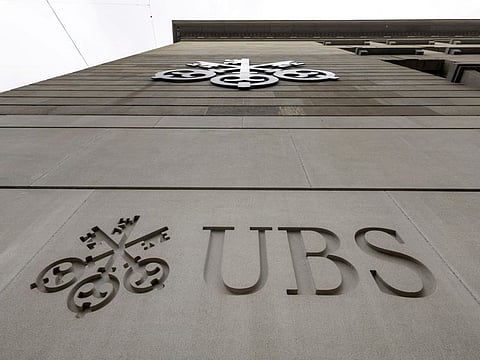UBS pulled in $28 billion in run-up to Credit Suisse deal
In the investment bank income from equities trading fell 23% from a year earlier

Zurich: UBS Group attracted $28 billion from wealthy clients in the months running up to its takeover of Credit Suisse Group, in an early indication of how many assets the combined firms will be able to retain.
The net new money at the firm’s global wealth management business included $7 billion that came in the 10 days after the takeover of its smaller rival was announced. The haul for the quarter is less than half the $69 billion that Credit Suisse’s rich clients pulled in the period.
Still, the inflows were a bright spot in a first quarter that saw UBS miss estimates for profit as it set aside $665 million for litigation tied to its role in selling mortgage securities before the financial crisis. The firm also warned that geopolitical tensions and recent liquidity concerns in the banking industry are depressing client activity and could affect new money in the months to come.
Retaining clients and assets is a key challenge for Sergio Ermotti, who was brought back as UBS CEO as the firm embarks on an extensive restructuring following its rescue of the smaller rival in late March. Credit Suisse revealed on Monday that it borrowed far more from a central bank liquidity backstop than previously known, with clients continuing to flee after the deal was announced.
UBS has been a beneficiary of Credit Suisse’s troubles, with wealthy clients adding $23.3 billion net new fee-generating assets already in the fourth quarter. It is now paying about 3 billion francs for a firm that finished March with a book value of 54 billion francs, giving it plenty of protection against losses.
Despite the new money that came in, revenue at the wealth business fell short of estimates, with UBS pointing to “’subdued” client activity against the backdrop of recent market turmoil.
In the investment bank, where traders and dealmakers also had to contend with volatility from the banking crisis and uncertainty about the direction of interest rates, income from equities trading fell 23 per cent from a year earlier, compared with 14 per cent at the biggest US firms. Fixed-income trading gained 0.8 per cent, ahead of the 1 per cent decline on Wall Street.
Bringing back Ermotti is part of a broader effort by UBS to build a management team with extensive institutional knowledge to oversee the integration. Christian Bluhm agreed to remain in his role as the bank’s chief risk officer, six months after announcing his departure, while his appointed successor Damian Vogel will now head risk control activities related to the integration.
Ermotti has also been holding talks with former UBS bankers including Tom Naratil about returning to the firm, people familiar with the matter have said. UBS also tapped strategy consultant Oliver Wyman for help on the integration, reconnecting Ermotti with former adviser Huw van Steenis, vice chair of the firm who left the Swiss bank under former CEO Ralph Hamers, Bloomberg has reported.
Chairman Colm Kelleher has said that the integration will take as long as four years, and that the deal’s complexity makes it more challenging even than the emergency rescues forged during the height of the 2008 crisis. Kelleher said that there were “clearly” parts of Credit Suisse that had cultural issues, particularly the investment bank and some risk functions.
During Ermotti’s first tenure as CEO, the bank pivoted away from investment banking and further toward wealth management, allowing it to make a predictable profit of between $4 billion and $8 billion every year for the past five years. The Swiss lender has said it plans to significantly cut Credit Suisse’s investment bank and ensure that its risk profile is more aligned with its own.
Sign up for the Daily Briefing
Get the latest news and updates straight to your inbox



